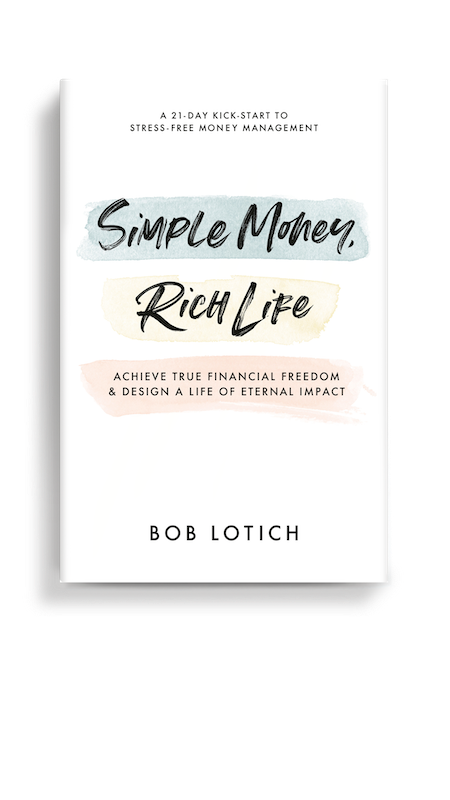Disclaimer: I write this from my perspective. I was not wired for Corporate America. I know some are and not everyone is called to be an entrepreneur, but it is pretty clear to me that this is a part of who I am created to be. So for those of you in a situation like mine, I hope this helps.
Why I wanted to get out
 Almost 10 years ago I ventured out into self-employment after spending much of the previous decade in the “Rat Race”.
Almost 10 years ago I ventured out into self-employment after spending much of the previous decade in the “Rat Race”.
Wikipedia defines it as “an endless, self-defeating, or pointless pursuit. It conjures up the image of the futile efforts of a lab rat trying to escape while running around a maze or in a wheel.”
For most of that time I was a glorified pencil-pusher in the corporate abyss of a Fortune 500 company.
I was a pawn in the corporate version of Henry Ford’s technological breakthrough: the assembly line.
I had a specific thing I was supposed to do each day.
Creativity was not required, valued, or even tolerated.
The corporate machine’s wheels were spinning and everyone seemed happier when you left “good enough” alone.
It was frightening to find myself in such a unique and specific role that my job title contained six words and no one outside my office would have any chance figuring out what it actually meant. The frightening part, of course, was that there might only be a handful of companies in the country that ever needed someone with the highly specialized batch of skills that my job required.
For some strange reason I actually couldn’t wait to finish college so I could get started in Corporate America. I had lofty ambitions and was itching to get started. It didn’t take long before I realized that Corporate America was not for me.
I felt “important” wearing a tie to work for about the first week, but before long, I would see the lawn-care guys outside and legitimately be jealous that I was locked up in my cubicle/cage while they got to work outside.
The saddest part was seeing so many of my co-workers who had dreams of things they wanted to do, but because of fear they worked decades in jobs they hated. I saw so many who allowed fear and complacency to control their destiny.
Rather than taking a chance on reaching their dreams they settled to become “lifers” in jobs they did not enjoy.
“If you won the lottery and the first thing you would do is quit your job, then you need to quit your job.” – Dave Ramsey.
I was in the same boat. Each day I saw myself looking more and more like some of those around me. I could so clearly see where I would be in 20 years if I didn’t make a change and it was scary and depressing. Yet I didn’t know how to change it or what to do about it. I wanted something so different for my life, but was on the wrong track to get there.
Now that I have spent almost 10 years working for myself, I can’t imagine doing anything else. For as trapped and held down as I felt before, I feel the opposite extreme of the joy of freedom.
And just to be clear, self-employment has plenty of it’s own challenges and difficulties, but I honestly think they pale in comparison to what I went through while spinning my wheels in the Rat Race.
Step 1: I started something knowing that it might fail

It took me years to take this step. I finally realized that I just needed to start something, anything – if it failed, then it failed, at least I tried. I had to work to overcome my fear of failure because it was paralyzing me.
I found myself spending way too much time trying to figure out the perfect plan even before I took the first step. The amazing thing is that as I started taking steps, the plan became clearer. It’s just like a horizon line. It stays the same until you start walking towards it. As you get closer you see things that you couldn’t see before.
I am a planning fanatic and think it is a critical component of just about everything, but for me I was excessively planning to the point that no progress was being made. It was like trying to map out each step of a hike on a trail that I have never walked on.
I finally decided I was just going to start hiking the trail and when I saw a log laying on the trail, I would plan out my steps then. But there was no way for me to see the log from the trailhead – so I had to take that first step.
Starting a business
When I started this blog, my first financial goal was to make $100.
I gave myself 6 months to reach that goal. I set a small goal because I needed to have a really good chance of reaching that goal. By reaching that goal, I would be inspired to keep going. Successfully achieving goals is one of the most motivating things out there.
So I work hard to set attainable goals. Had my first goal been to make a full-time income from the blog I don’t know that I would have been able to stick it out that long without having the feeling of success that comes from reaching a goal.
At the beginning I wasn’t sure I would ever be able to make enough from my blog to support my family, but I was very confident that I would at least be able to make some money at it and that was a step in the right direction.
It was something I enjoyed and was passionate about it.
I started a blog about personal finance because it was something I was interested in. I enjoyed figuring out how to manage my money better and enjoyed helping others do the same. I think it is important to mention that I didn’t write about personal finance because I thought it would be a profitable topic. I wrote about it because I enjoyed it.
The corporate jobs that I was trying so hard to get away from were a result of me just getting a job because I needed money. If I would have started a business just because I thought there was money to be made with it, I could potentially be in a similarly depressing state – running a business just because it pays the bills.
I had been advised by enough people that I should “do something I love doing and find a way to get paid for it.” This really is great advice. The rules are changing and now more than ever the possibilities of businesses to start is endless.
I worked at it part-time
An excuse that I often hear, and admittedly used myself for a while, is “I don’t have time to start a business.” Up until the point I left my corporate gig, I don’t think I ever spent more than 15 hours in a week on the blog. And most weeks were from 5-10 hours.
I used to devote one night a week to writing and would sit down for about 3-4 hours and try to write a few articles. On an average week I would spend 15-30 minutes each day on maintenance activities. The point is I wasn’t working 2 full-time jobs, I just gave up a few hours of my week (that I normally spent watching TV anyway) to devote to freeing myself from my 9-5. And since it was something that I enjoyed – it really didn’t feel like work at all!
A failed attempt
I should mention that during this phase where I was trying to ways to generate income, I tried a few things that failed. They failed because I realized that I didn’t really enjoy them. Most of them were making money, but I realized that it wasn’t something I wanted to do, so why keep doing it?
One example was an Ebay business I started (which you can read all about it: Step-by-Step guide to starting an Ebay business). I had an idea of a product I could sell (by the way, if you can think of it, you can sell it on Ebay) and so I decided to do a little test. I spent a couple hundred dollars knowing that even in the worst case scenario I would probably break even. I sold my products and was detailed in calculating my expenses so I could get an accurate picture of how much profit I made.
After my test was complete, I calculated that I made $160 in profit from selling 6 items. From what I could tell I could have scaled this up as well in order to make much more if I wanted to. But that was my answer, I didn’t really want to. Like I mentioned above, I didn’t want to get caught up in doing something just to get paid again. I had already learned my lesson.
Starting a business should be cheap
Another one of my excuses that I used for a long time was that I didn’t have money to start a business. I always thought that you needed to borrow $250,000 from bank just to get started and then if it fails, you have to spend 10 years trying to pay for your losses. While there are still businesses out there like that, there are a whole lot more that can be started from your house for next to nothing.
These days you can quickly and easily set up a website or blog for a few bucks a month (our FREE tutorial here if you are interested) and find all kinds of free or cheap tools to create a online store, blog, consulting website, or anything else. You can start an endless number of businesses from home spending VERY little money to get started. The days of having to risk a lot of money to start a business are over.
Step 2 – Lowered our cost of living to the lowest reasonable point
I am very calculated in most decisions that I make because I don’t like taking on unnecessary risk. But whether I like it or not, handling risk is a part of everyone’s life. Some people try (unsuccessfully because it is impossible) to remove any and all risk from life. And others seem to not to take risk into consideration when making any decisions. But it seems to me that the most successful people do a great job of balancing the two. But I digress…
I knew that stepping out into self-employment that there were elements of risk. I also knew that if we could lower our cost of living then we would be able to survive a challenging financial situation for longer than if we had a lot more expenses.
For example, if a family is accustomed to living on $5,000 a month, they need a $60K salary to support that lifestyle. If by cutting expenses, and spending $1,000 less each month they can now survive on a $48K salary.
Taken even further, if the business had a few months that only made $3,000, an emergency fund of $10,000 (in our example) would last twice as long (10 months instead of 5 months) if they had cut their monthly expenses down to $4,000 rather than $5,000.
How we did it

When Rocky fought the Russian Guy he didn’t just sit around hoping that he would win. He worked out to prepare and get ready for the battle. Also, he didn’t only strengthen his offensive muscles, but his defensive muscles as well. He strengthened his core muscles so that when the Russian delivered a blow to his stomach it wouldn’t just destroy his internal organs. He could flex those stomach muscles that he had worked on and they would provide a barrier of defense.
I view the whole exercise of lowering your cost of living like Rocky working on defense. You know you are probably going to get punched in the stomach and it will hurt either way, but if you are prepared for it, it won’t be as bad.
In our case we had started a budget years earlier and had our expenses pretty well under control, but we scaled back even more. In preparation for the big transition we cut out just about all unnecessary spending for the previous 6 months. We spent very little on clothes, going out to eat, Starbucks and other casual luxuries. We cut back on just about anything we could, meanwhile taking all the savings and socking it away in our emergency fund.
Step 3 – Paid off all debt possible
After we got a decent chunk in our emergency fund, we spent the rest of the preparation phase paying off any and every debt we could. Like I mentioned earlier, we knew that every hundred dollars of monthly payments that we could eliminate would just better our chances of survival. Much like the debt snowball, we paid off smaller debts, in lieu of larger ones with higher interest rates. So for us, we paid off the remaining balances on our cars (thankfully there wasn’t much left), paid off multiple credit cards, and some of the smaller student loans.
By eliminating so many of these smaller debts, we were able to greatly reduce our monthly payments, and thus provide ourselves with a larger cushion. And while cutting back on our monthly expenses helped prepare us for starting the business, eliminating so many monthly payments proved to be even more valuable.
When you realize that getting rid of a $300 car payment can be enough to cover your groceries each month, you can start to see the potential.
Step 4 – Used time wisely
Employees in the Rat Race who punch a timeclock have little incentive to use their time wisely. As one of them, I didn’t get paid (or even rewarded) by performance – only based on whether or not I showed up. I guess if I did a bad enough job, they would have fired me – but you get the point.
Working in an environment like this generally creates terrible time-management habits. Getting to go home was the incentive I had to finish my work each day – which, surprise, surprise, took 8 hours each day. But it was always amazing how we could supernaturally finish all our work in 6 hours – when they said we could leave early – if our work was complete. So just like Parkinson’s Law states that expenses rise to meet income, so too do tasks expand to fill the time they are allotted.
Learning how to overcome this challenge is a key to being self-employed. I still have tons of room to grow in this area, but thankfully have made some progress. The key for me has been to ferociously eliminate distractions and to challenge myself to get tasks done within an allotted amount of time. So I would look at something I need to complete and challenge myself to get it completed in a shorter amount of time. Without fail, I always get more done by doing this than if I just started it without a completion time goal in mind.
In my case, when I was officially working on the business full-time, I knew I only had a few months to start making it profitable or I would have to call it quits. So making the most of every hour was very important.
Step 5 – Reinvested in the business
If I had not gotten laid off and had more time to grow the business part-time, I would have reinvested more of the profits back into the business. In theory if you have a full-time job that you are supporting yourself from, all the profits from the business would just be gravy. So if you were making $500/month with the part-time business, I can’t think of better way to speed up the process of becoming full-time than investing it in your business. This is a much better idea than spending that extra $500 on clothes each month. 😉
Buying advertising to generate more sales, adding new products, hiring people to do tasks, or anything that would help the company generate more income seems like a great idea to me. I was able to do a little bit of this while we were in the preparation phase, but once you cut the cord from your employer, you now need that money to pay the bills – so you might as well take advantage of it while you can!
Final words
To reiterate, I know full well this isn’t for everyone. But, I know there are a lot more people out there like me – who were called to do something, but were bound up by fear.
If that is you I encourage you to fight against it and try. We only have one life to live and we are responsible to use the gifts that God has given us. Remember the Parable of the Talents?
If you do decide to step out, pray and do it in God’s timing. Don’t just run out and quit your job – use wisdom and be patient, God’s ways seem to take a while sometimes.
Plan for the worst case scenarios, and pray for the best case!
Please share your thoughts and comments below!




